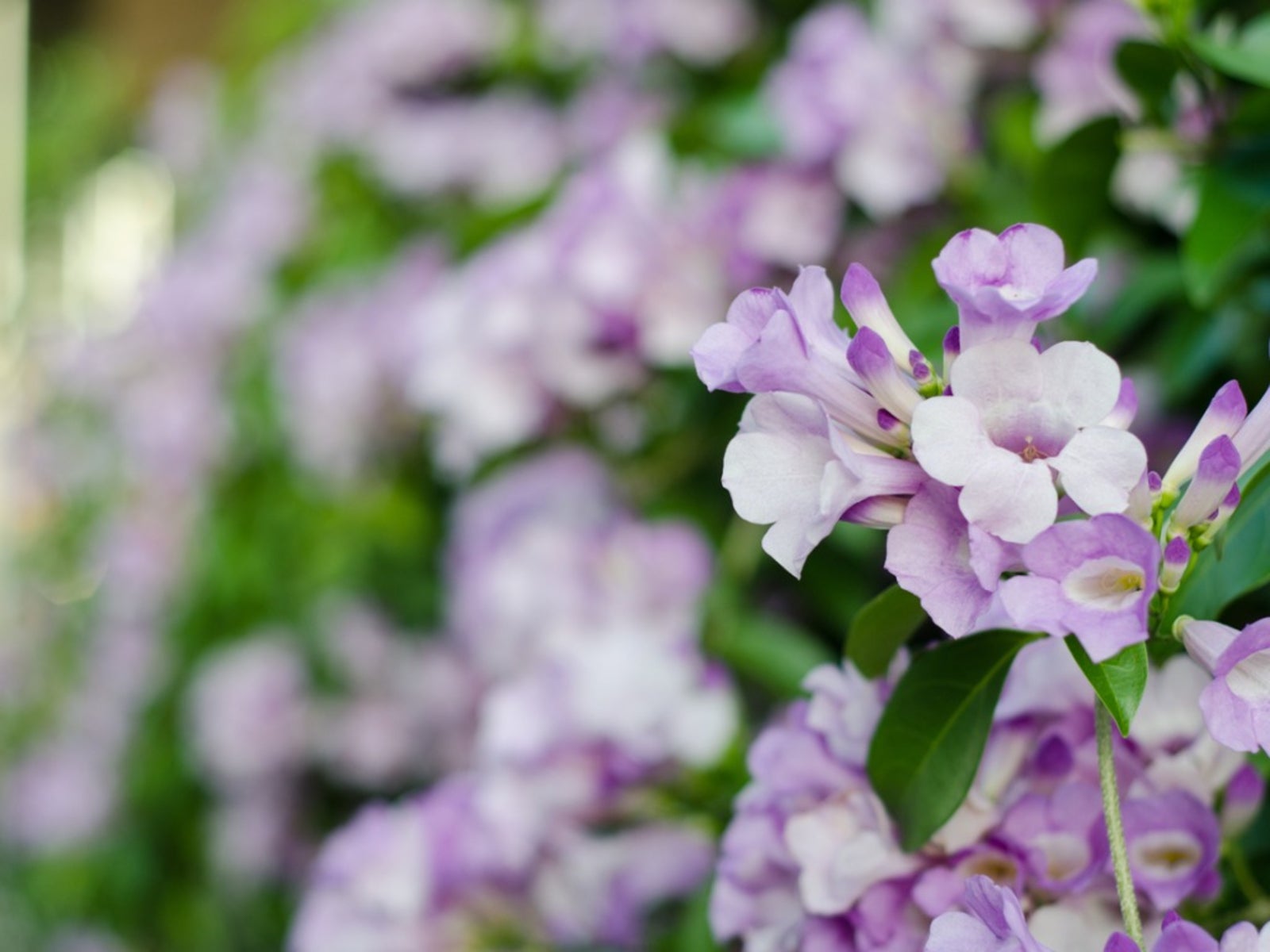Garlic Vine Care: Tips For Growing Garlic Vine Plants


The garlic vine, also called the false garlic plant, is a woody climbing vine with beautiful flowers. Native to the South America, the garlic vine (Mansoa hymenaea) lends a tropical feel to gardens in U.S. Department of Agriculture plant hardiness zones 9 through 11. Read on to learn about the false garlic plant and garlic vine propagation.
False Garlic Plant Info
Garlic vine is known as the false garlic plant because it is unrelated to edible garlic. However, it can be used as a substitute for garlic in an emergency. Growing garlic vine in very rewarding because it produces beautiful lavender blossoms, bell-shaped and fragrant. According to plant lore, a garlic vine eliminates the bad luck from a house.
Garlic Vine Uses
If you are interested in growing garlic vine, you have many options as to where to plant it and how to use it. You can grow the vine in the garden or in containers outside or in the home. One of the top garlic vine uses is to grow it on a chain link fence. Be careful if you use a wooden structure since the vine can get woody and heavy. It can be grown in containers and should be trimmed after the flowers are gone. As previously stated, the false garlic plant can also be used as substitute for garlic in food. And there are garlic vine uses in herbal medicine systems, where it is used as an analgesic, anti-inflammatory, anti-rheumatic, and anti-pyretic. The leaves are also used to prepare medicine for coughs, colds, flu, and pneumonia.
Garlic Vine Care
With regards to garlic vine propagation, the plant grows well from cuttings. Take a semi-hardwood cutting with at least three nodes and plant it in a damp mixture of sand and compost, taking off the lower leaves. This starts the rooting process. When you start growing garlic vine, plant it in a garden location that gets either full or partial sun. Garlic vine care is easiest if you grow the plant in well-drained soil. Don’t stint on water with this plant. If you use compost at the base as mulch, it helps the roots stay cool and moist.
Gardening tips, videos, info and more delivered right to your inbox!
Sign up for the Gardening Know How newsletter today and receive a free copy of our e-book "How to Grow Delicious Tomatoes".

Teo Spengler is a master gardener and a docent at the San Francisco Botanical Garden, where she hosts public tours. She has studied horticulture and written about nature, trees, plants, and gardening for more than two decades. Her extended family includes some 30 houseplants and hundreds of outdoor plants, including 250 trees, which are her main passion. Spengler currently splits her life between San Francisco and the French Basque Country, though she was raised in Alaska, giving her experience of gardening in a range of climates.
-
 Moody Blooms For Spring: 8 Types Of Black Flowers To Add Drama To Spring Displays
Moody Blooms For Spring: 8 Types Of Black Flowers To Add Drama To Spring DisplaysFrom midnight burgundies to inky violets, several types of black flowers can enrich and embolden a spring display. Try these brooding bloomers for a moody garden
By Tonya Barnett
-
 Can Snake Plants Live Outside? Everything You Need To Know For Snake Plants Al Fresco
Can Snake Plants Live Outside? Everything You Need To Know For Snake Plants Al FrescoSnake plants can live outside given the right conditions, but be careful that they don't take over! Learn the best way to use snake plants in your landscape.
By Mary Ellen Ellis